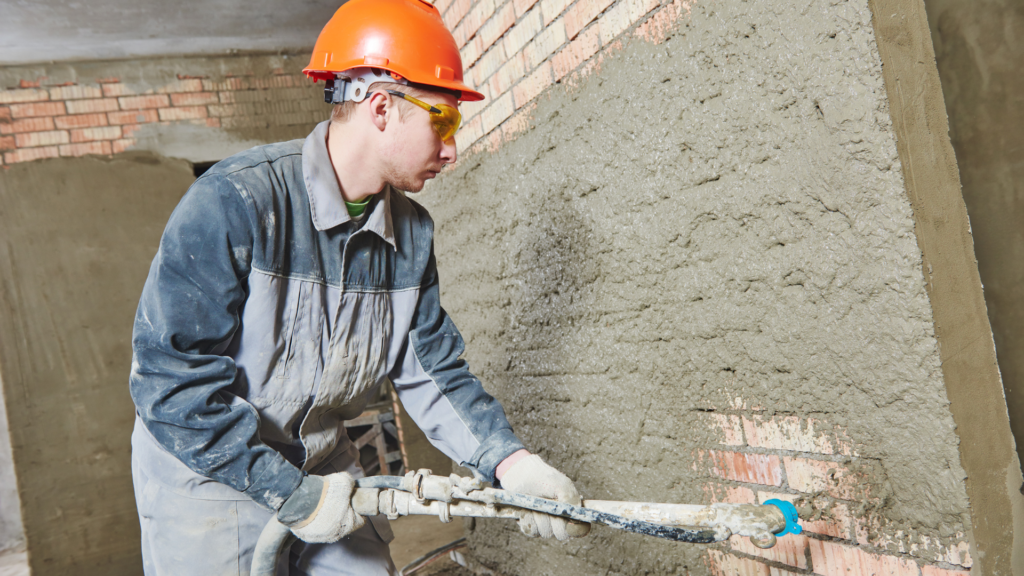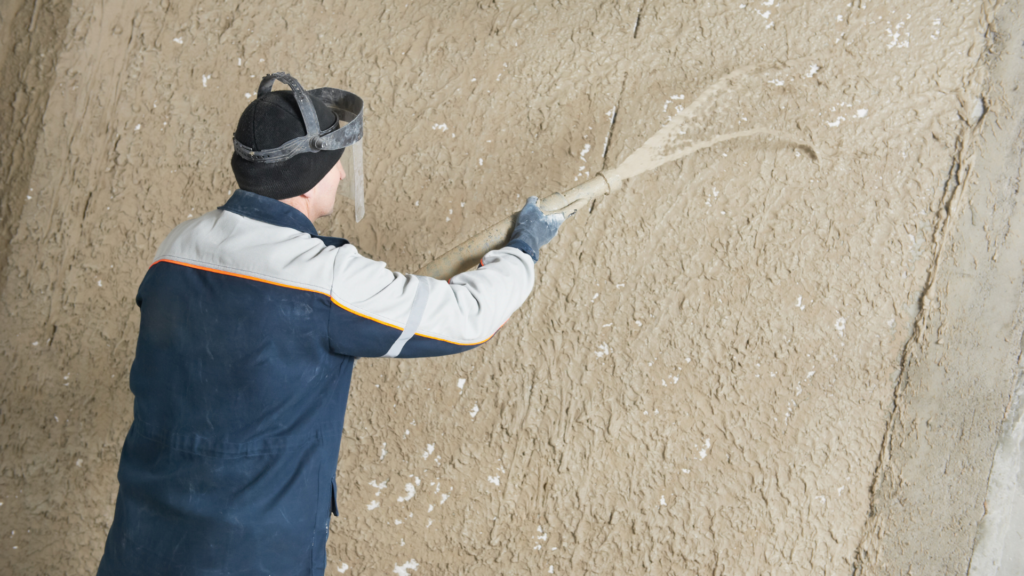Stucco is a popular siding material used on homes and buildings for its durability, energy efficiency, and aesthetic appeal. However, over time, stucco can develop cracks and other damages that require repair. In this comprehensive guide, we will take a closer look at stucco repair and demystify the process. We will start with understanding the basics of stucco as a siding material and explore different types of stucco textures, including traditional and contemporary finishes. We will also compare fine, medium, and coarse textures to help you choose the right one for your needs. Lastly, we will discuss key factors to consider when choosing between traditional and modern stucco materials. Follow along to learn everything you need to know about stucco repair and maintenance.

Understanding Stucco: An Essential Guide
Stucco is a popular and durable siding material known for its unique texture. Traditional stucco is made up of cement, lime, sand, and water. On the other hand, synthetic stucco, or EIFS, combines stucco with insulation. Acrylic stucco, also known as polymer stucco, is water resistant and offers exceptional durability. Understanding the different types of stucco, such as traditional, synthetic, and acrylic, is essential for anyone considering using it as a siding material.
The Basics of Stucco as a Siding Material
Stucco as a siding material offers several benefits. It consists of multiple layers, including the scratch coat, brown coat, and finish coat. These layers provide insulation and moisture resistance to exterior walls while giving them a smooth finish. In addition to its practical advantages, stucco can enhance the curb appeal of a home. However, like any other material, stucco may require repair to address issues such as water damage, cracking, or mold growth.
Different Types of Stucco: Traditional, Synthetic and Acrylic
When it comes to stucco, there are different types to choose from. Traditional stucco, the oldest type, is made from cement, sand, and water, requiring skilled labor for installation and repair. Synthetic stucco, also known as EIFS, has a foam board insulation layer and is easier to install. Acrylic stucco, on the other hand, is made with acrylic polymers, offering more flexibility and durability. Consider the climate and location when selecting the right type of stucco for your building. Regular maintenance and repairs are crucial for the longevity of your stucco, preventing larger issues in the future.
A Close Look at Traditional Stucco Textures
Traditional stucco textures offer a variety of options to enhance the visual appeal of your exterior stucco. Lace texture, created with a float tool, creates a delicate, lace-like pattern on the surface. For a more whimsical touch, the cat face texture, achieved with a hopper gun, resembles a feline face. If you prefer a smooth, sandy appearance, the sand float texture, created by adding fine sand to the stucco mixture, is a great choice. The beauty of traditional stucco textures lies in their ability to be customized to achieve the desired look.
Cat Face Texture
The cat face texture, resembling the face of a cat, is created using a hopper gun. This decorative stucco finish incorporates different sizes of aggregate material embedded in the stucco, adding visual interest to the exterior. It is a unique way to enhance the aesthetics of your stucco, creating a visually appealing texture that stands out. The cat face texture can be achieved by applying a new layer of stucco with the hopper gun, utilizing the aggregate material to create the desired cat face pattern.
Sand Float Texture
Sand float texture is a popular choice for stucco finishes. It involves adding fine sand to the stucco mixture, resulting in a smooth finish with a sand-like appearance. This texture gives the wall a clean, traditional look. With sand float texture, you can achieve a beautiful and timeless exterior stucco finish. The addition of fine sand adds depth and texture, enhancing the overall aesthetic appeal of your stucco surface.

Exploring Contemporary Stucco Finishes
Contemporary stucco finishes offer versatility and a range of textures to suit different architectural styles. One popular option is the smooth finish, achieved through trowel application, which creates a sleek and modern look. Another option is the Santa Barbara finish, also achieved by trowel application, which gives the stucco wall a smooth and polished appearance. These contemporary finishes provide homeowners with the opportunity to enhance the exterior stucco of their homes, creating a visually appealing aesthetic.
Smooth Finish
Smooth stucco finish, achieved through trowel application, creates a clean and sleek look. It is a popular choice for contemporary and modern architectural styles, providing a smooth and seamless appearance. The smooth finish is achieved by applying stucco base coats with a trowel, resulting in a polished surface. This type of finish is often seen in new stucco applications and can be applied to both exterior and interior surfaces. It gives a fresh and modern look to any space.
Santa Barbara Finish
Achieving a sleek and polished appearance, the Santa Barbara finish for exterior stucco involves a trowel application. This elegant finish adds sophistication to the stucco, making it suitable for various architectural styles. It is applied as a new layer of the stucco base coat, creating a smooth and polished look. The Santa Barbara finish can enhance the overall aesthetics of any stuccoed surface.
Custom Finishes
Add a unique touch to your home’s exterior with custom stucco finishes. Whether you prefer a lace, dash, or smooth finish, these custom textures can greatly enhance the curb appeal of your property. To get started, reach out to a professional stucco repair company for a free quote on transforming the exterior of your home. With the right custom finishes, you can create a truly one-of-a-kind look.
Comparing Fine, Medium, and Coarse Stucco Textures
When comparing stucco textures, it’s important to understand the differences between fine, medium, and coarse options. Each texture offers a unique stucco finish that caters to different preferences. Fine textures provide a smooth and elegant appearance, while coarse textures create a more rustic look. When choosing the right stucco texture for your repair project, consider factors such as the type of repair needed, square footage, and desired aesthetic. Consulting with a stucco professional can help determine the best texture for your specific needs.
Characteristics of Fine Textures
Fine stucco textures feature a smooth and polished finish, providing a traditional look favored by many homeowners. Achieving this desired smoothness requires the expertise of skilled stucco professionals. Apart from its aesthetic appeal, the fine stucco texture offers durability, water resistance, and longevity. By incorporating fine textures, you can enhance the exterior of your home and enjoy a long-lasting, low-maintenance solution.
Factors to Consider When Choosing Between Traditional and Contemporary Stucco
When selecting between traditional and contemporary stucco, there are several factors to consider. It’s important to evaluate the budget, maintenance requirements, and longevity of both options. Additionally, assess the aesthetic differences, durability, and insulation properties of traditional and modern stucco. Consulting with a professional stucco repair company can provide valuable insights into the unique characteristics of each type. Furthermore, consider the siding material, desired texture, and overall look of the exterior before making a decision. By considering these factors, you can make an informed choice that suits your needs.
Budget Considerations
When considering stucco repair, it’s important to evaluate the overall cost. This includes materials, labor, and any additional services required. To get an accurate estimate, it’s recommended to request quotes from multiple stucco repair companies and compare prices. Factors such as the square footage of the repair area, the type of repair needed, and the desired stucco texture should also be taken into account when estimating the budget. Lastly, discussing your budget considerations with a professional stucco repair company is crucial to ensure that the repair fits your financial needs. Understanding the different types of stucco repair techniques available can help determine the most cost-effective option.
Maintenance and Longevity of Stucco
Regular maintenance is crucial for the longevity of stucco. Inspect, repair cracks, and clean the exterior surface. Seek guidance from a professional stucco repair company to ensure proper maintenance. Stucco is durable and resistant to mold, cracking, and water damage. Understand the longevity, expected lifespan, and appropriate repair methods. Perform routine maintenance to protect your stucco investment.
What are the Key Differences in Aesthetics between Traditional and Modern Stucco?
Traditional stucco offers a timeless aesthetic, while modern stucco provides a sleek, contemporary finish. Consider the house exterior, surrounding environment, and desired aesthetic when choosing between the two. Consult with a stucco professional to understand the unique characteristics of each type and select accordingly.
Conclusion
In conclusion, stucco repair can be a complex process that requires careful consideration of various factors. Understanding the basics of stucco as a siding material and the different types of stucco textures and finishes is crucial in making informed decisions. Whether you prefer traditional stucco or contemporary finishes, it’s important to weigh factors such as budget considerations and maintenance requirements. Additionally, consider the aesthetic differences between traditional and modern stucco to ensure that your choice aligns with your desired look for your home. By taking the time to understand stucco and its nuances, you can confidently navigate the world of stucco repair and make choices that will enhance the beauty and durability of your home. If you have any questions or would like to schedule a consultation, please contact us today or visit our website.


